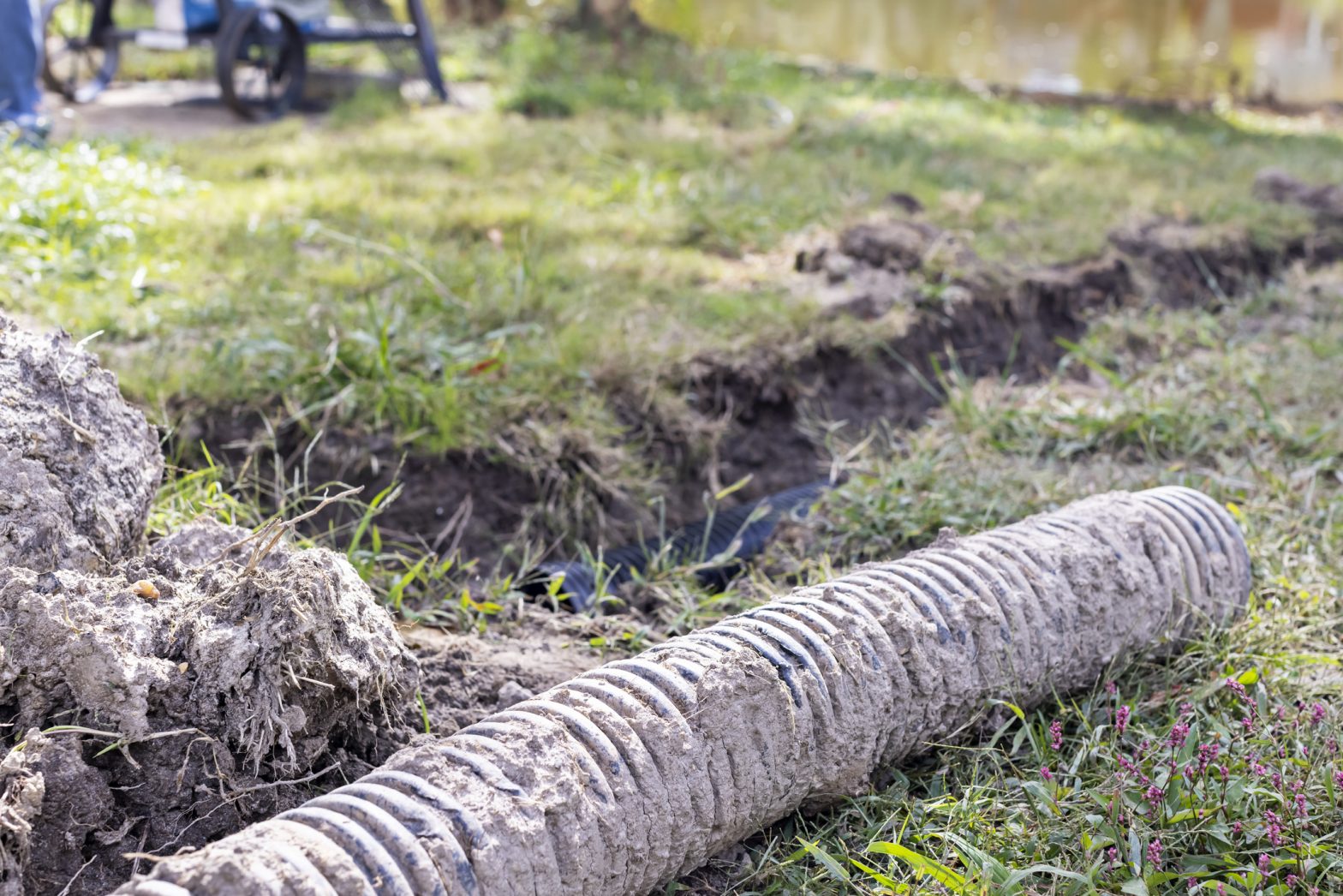




If you talk to an interior drainage company, they will likely tell you to get an interior French drain. Conversely, an exterior drainage company will likely tell you to have an exterior French drain installed. So, which is better? Let’s discuss the facts.
Installing an interior French drain involves drilling weep holes in the foundation of your home to permit the water that has penetrated the blocks to pour out and into the drain that lines the interior of the basement,, where it goes into a sump pump and is pumped out of the home.
Exterior French drains are built outside your home in the yard. Your foundation will likely need to have the dirt dug out around it so the wall can be waterproofed from the outside to prevent water from entering. The exterior French drain will need to be installed next to the foundation, waterproofed with the grade of the yard sloping away from it so you don’t have water sitting up against your foundation.
Interior French drains, due to their nature of managing water that has already penetrated the house, create an environment conducive to mold growth. This is primarily because these drains, installed beneath the basement floor, necessitate the presence of moisture inside the house to function.
As water percolates through the walls into the basement, it generates a damp environment, which is ideal for the proliferation of mold spores.
Mold, a fungus, thrives in moist conditions and can spread throughout your basement and even to other parts of your home. This damages your property and poses serious health risks, such as respiratory issues, allergies, and skin irritations, to the inhabitants. Additionally, the soil that surrounds the pipes and gravel of the drainage system is always wet. This leads to mold growth, which then causes mold spores, odor, and water evaporation to travel into the home.
Therefore, the inherent moisture management design of interior French drains can inadvertently lead to a persistent and detrimental mold problem in your home.
In addition to preventing water damage and mold growth, exterior French drains provide other benefits that make them a superior option to interior French drains. For instance, they can prevent foundation cracks and erosion by diverting water away from the foundation. This protects the structural integrity of your home and prevents costly repairs in the future.
While exterior French drain installation is the more long-lasting, robust solution for keeping water out of your basement if you do not have the yard space to keep the water an adequate distance from your house, an interior French drain may be necessary.
Moreover, exterior French drains are eco-friendly as they effectively manage storm water runoff by redirecting it into natural drainage systems or dry wells. This helps reduce the risk of flooding in your yard and promotes sustainable water management practices.
Some homes do not have the space required for an exterior French drain installation. When it comes to an exterior French drain installation, there is heavy machinery needed to complete the excavation, which will need adequate room to operate safely. Other properties are designed in a way that the foundation is not accessible, requiring an interior French drain.
Exterior French drains are considered a better long-term solution compared to interior French drains. This is because exterior French drains deal with the root cause of the problem, which is water seeping into the foundation from the outside. By waterproofing the exterior walls and diverting water away from the foundation, an exterior French drain prevents any future moisture issues.
While both interior and exterior French drains serve the purpose of removing excess water from your home, the latter is a more effective preventive measure against water damage.
External French drains are placed outside of the house, usually in a trench dug along the foundation. They collect water from around your home and redirect it away from the foundation through a pipe system.
Internal French drains are installed under the basement floor inside the perimeter of the foundation walls, and they collect water from underneath the floor. A trench is dug out where a perforated drain pipe is laid on top of washed stone. The pipe runs to an interior sump pump. Because of their design, the water is reaching the foundation of the home, which can lead to cracking and other issues.
With an exterior French drain, you are not just managing the problem but eliminating it by keeping water away from your foundation in the first place. This can save you time and money in the long run by preventing costly water damage repairs to your basement.
Exterior French drains are superior to interior French drains in terms of preventing water damage and mold growth, being more environmentally friendly and cost-effective, providing better long-term solutions, and offering aesthetic benefits.
At Isbir Construction & Landscape Corporation, we offer professional exterior French drain installation services to keep your home safe and dry. Contact us today to learn more!
Watch our latest videos on a variety of subjects from groundwater to drainage! Gain new knowledge and insight on the topics that impact you.